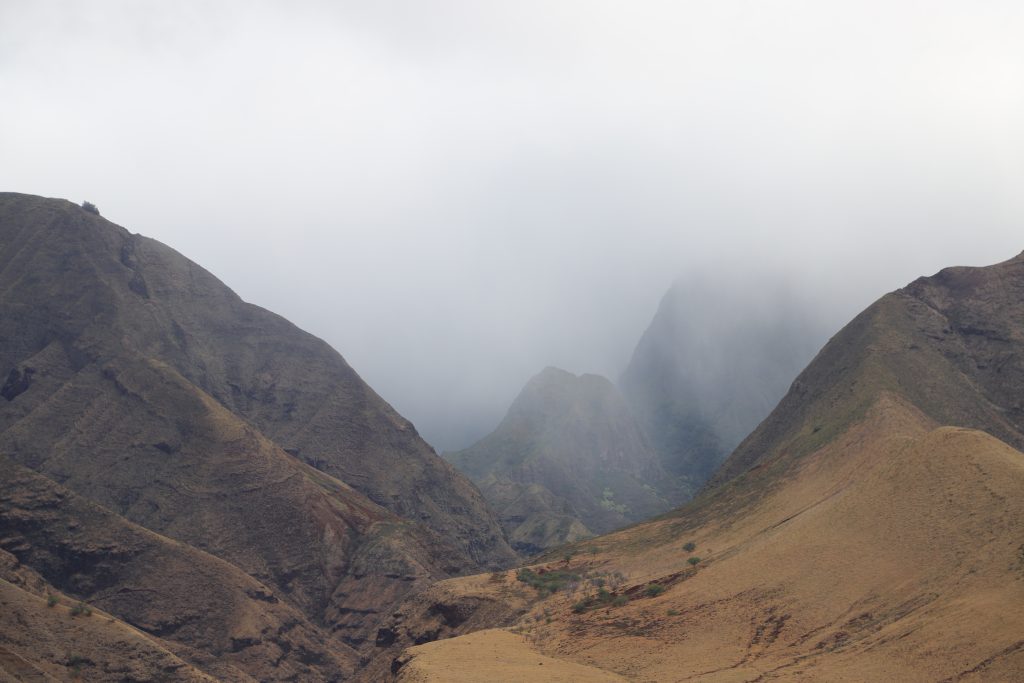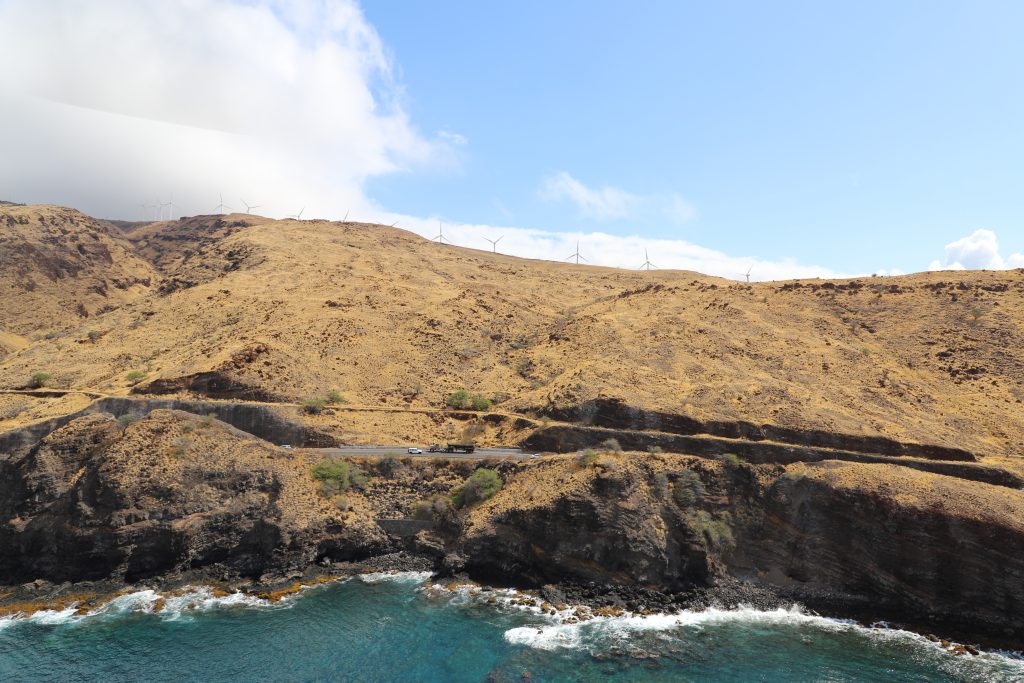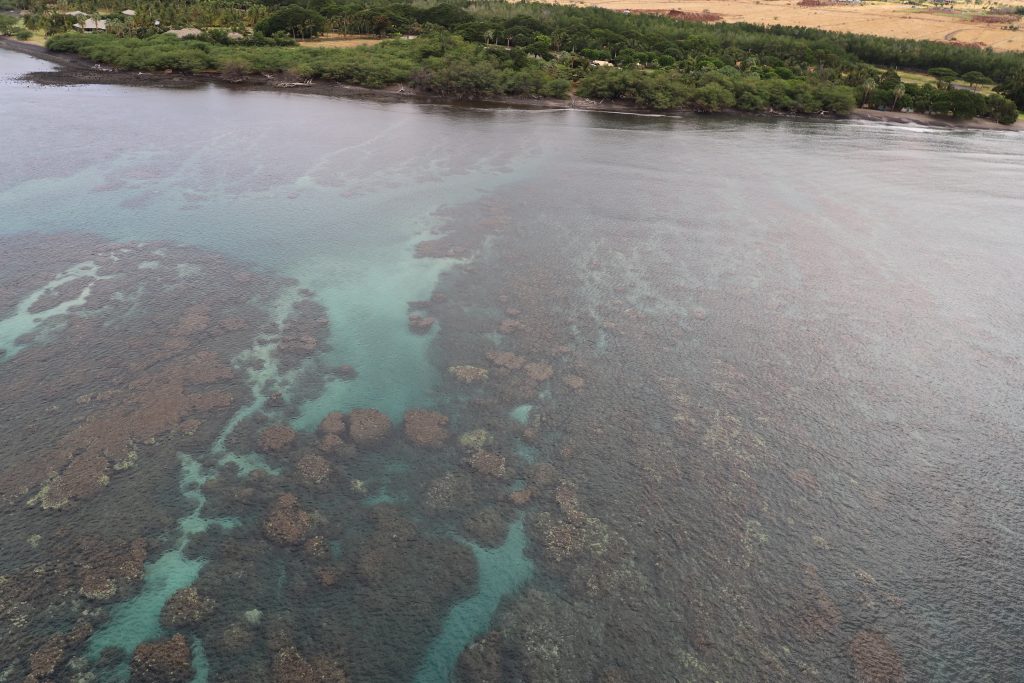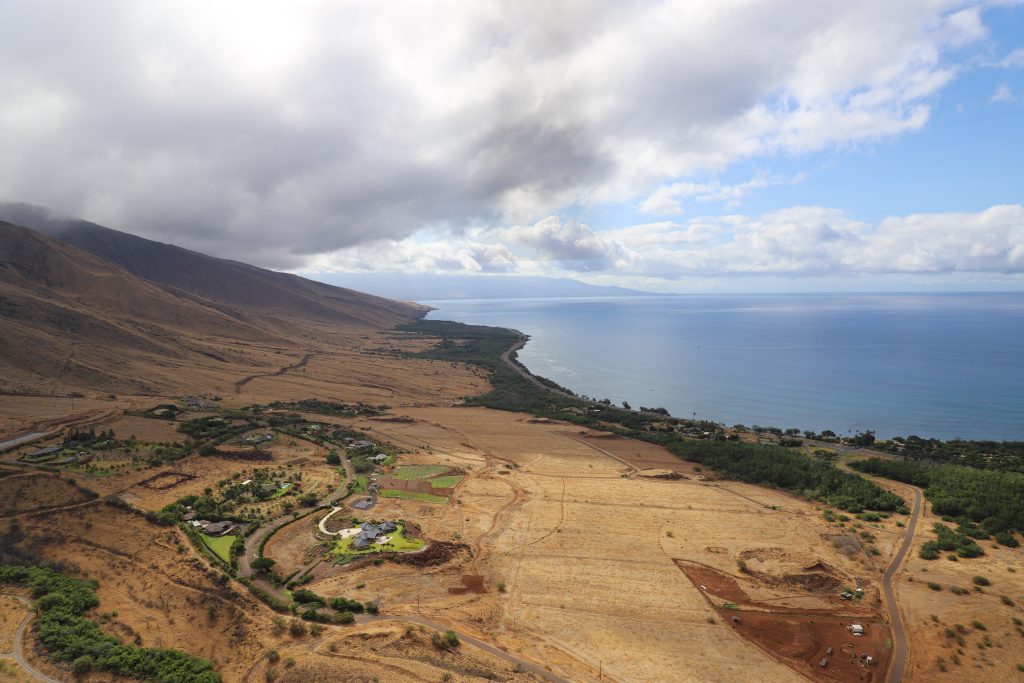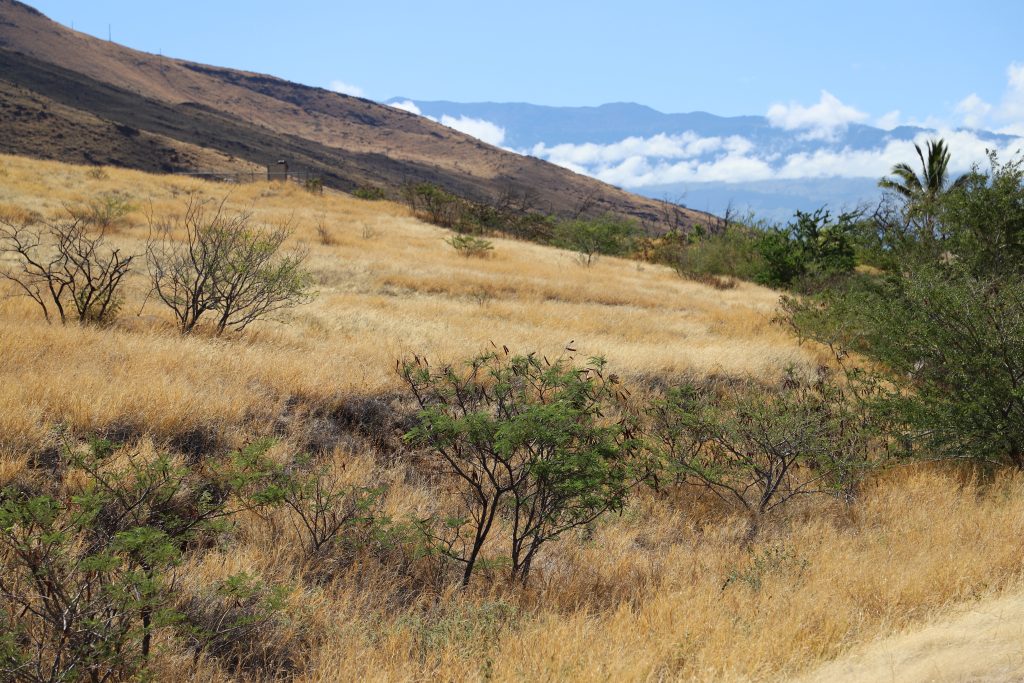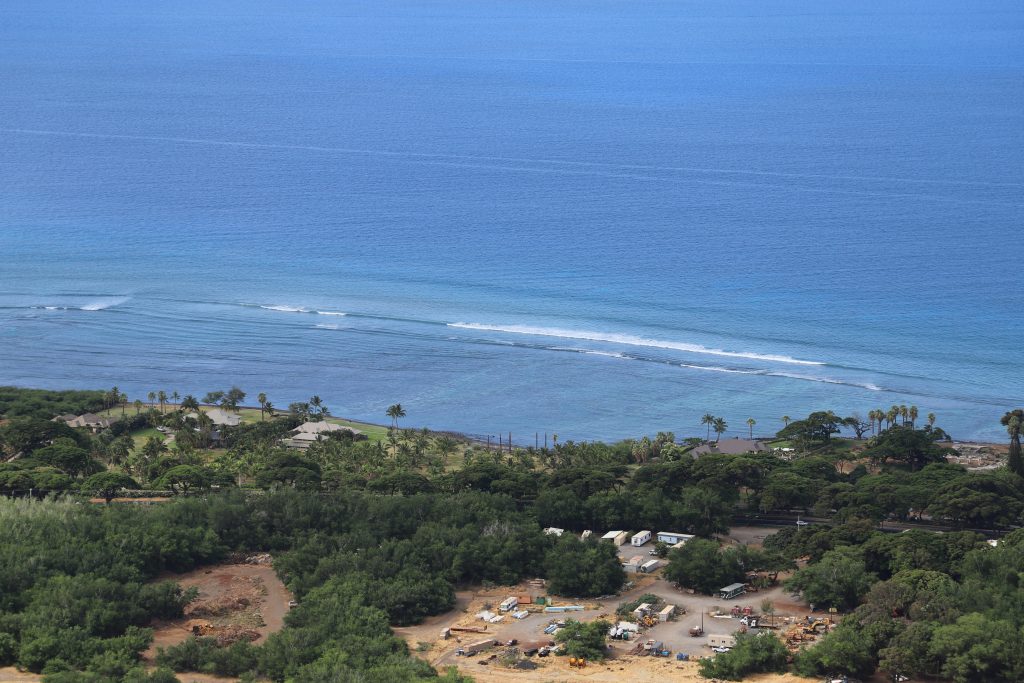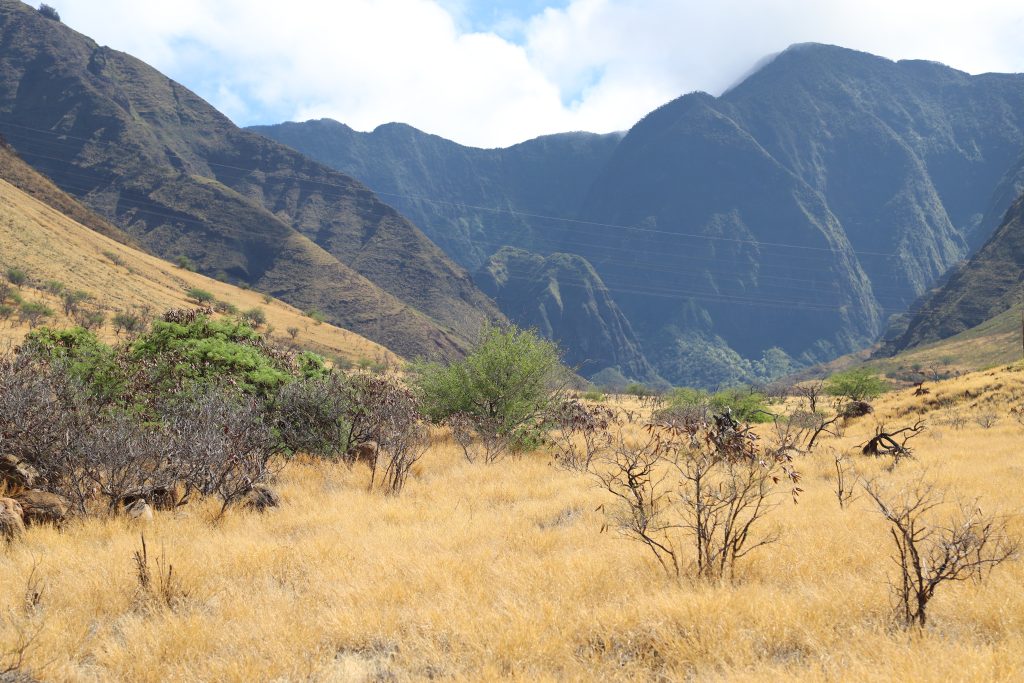A dream for reef restoration at Olowalu

Conservationists are taking their first “baby steps” toward the dream of Summit-to-Sea restoration of the reef at Olowalu.
“My dream, which was shared by Auntie Wiki Kaluna-Palafox, is to see clear streams running,” said Tamara Farnsworth of The Nature Conservancy. “My dream is to see healthy fisheries developing, to see brighter and more diverse corals on the reef. The really big dream is to see limu return to these shores. I think that’s a wonderful vision for us to work toward, is very abundant limu here back in the ocean and on the shores.”
Work to restore what is known as Maui’s mother reef began this week with baby steps. A contractor started drilling test bores for a possible retention basin in Manawaipueo Gulch.
“We’re doing some preliminary work for what is proposed in our NOAA transformational habitat grant,” Farnsworth said. The National Oceanic and Atmospheric Administration awarded $9.9 million to conduct, among other projects, reduction of sediment reaching the reef. During runoff periods the ocean turns brown and huge amounts of muddy sediment chokes the extensive Olowalu reef.
“We are looking at ways to capture the sediment before it reaches the ocean,” Farnsworth said. “We are taking baby steps to understand if it makes sense at this time, in this place, to possibly build a small retention basin. We’ve done cultural, literature, environmental and scientific reviews. Now we’re taking soil and core samples to help us understand the depth of a potential sediment basin and to understand if it even makes sense.”
TNC is one of numerous partners that will lead various projects in partnership with the DLNR Division of Forestry and Wildlife. Other projects planned during the three-year-long, Summit-to-Sea restoration grant period include:
- Address major sources of erosion
- Fencing to help control hooved animals
- Reforestation
- Riparian habitat restoration (rivers, streams, body of water)
- Dip tanks for wildland firefighting
- Additional fire breaks
Separate research and funding is targeted at developing “super reefs.” Rising sea temperatures have caused mass coral bleaching across the Hawaiian Islands, and the super reefs project is aimed at gaining better understanding of coral species that have the best thermal tolerance, meaning those that can tolerate rising temperatures the best.
Continuing the dream, Farnsworth said: “It hasn’t been that long ago since we saw the kinds of limu population that we hear about from our kūpuna and folks who’ve lived in this area. They remember the limu piling up. They remember limu being part of everybody’s diet just a generation ago.”
Stopping land-based threats is the first step toward the restoration of Maui’s mother reef. The problems exacerbated quickly over time, so project managers say to solve them is a long-term venture.





